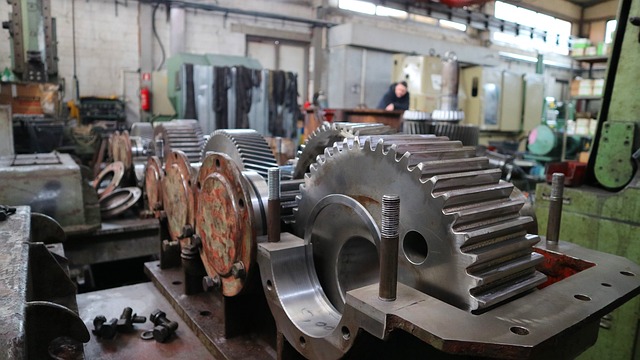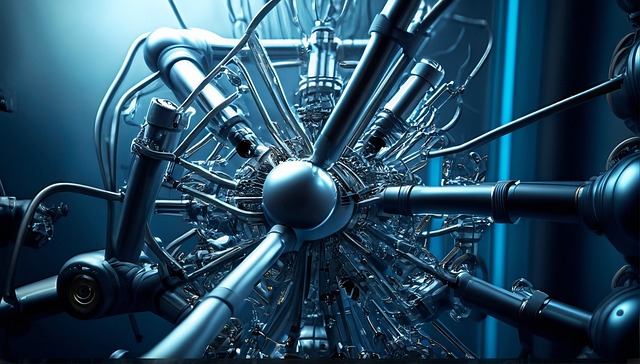Against the backdrop of increasing energy crises and environmental concerns, research in the field of efficient and eco-friendly motor drive systems is gathering momentum. Among these, the Permanent Magnet Synchronous Motor (PMSM) stands out due to its high efficiency, reduced noise levels, and lower energy consumption characteristics, which have promoted its ubiquitous deployment across varied sectors.
However, to realize all the potential of a PMSM, sophisticated methodologies for control would be needed. Among the methodologies, vector control technology holds a high status because of its capability to provide precise command over the PMSMs.
An inclusive understanding of vector control not only arms us with the correct insight into PMSM performance traits but also underpins significant theoretical backing for pragmatic applications. At the same time, it serves as a valuable touchstone aiding evolution within motor control technology advancements.

Vector control is a modern motor control technique, which, through coordinate transformation and decoupling control of current and voltage, the high-precision control of the motor can be realized. The key objective of vector control technology is to realize high dynamic performance and high static accuracy of the motor while improving the efficiency and torque output of the motor.
Vector control relies on the mathematical model of the motor, which converts the three-phase variable of the motor into a quadrature variable through coordinate transformation to realize the decoupling control of current and torque. The commonly used coordinate transformations are the Clarke transform and the Park transform:
-Clarke transform: transforms three-phase variables into orthogonal variables for vector control in a stationary coordinate system.
-Park Transform: Transforms orthogonal variables into vectors in the rotating coordinate system; used in vector control about a rotating coordinate system.
It mainly includes the following steps to carry out vector control:
The position and speed of the motor, and the values of current and voltage, are detected by sensors.
Based on the motor mathematical model and coordinate transformation, calculate the orthogonal current component of the motor. Control the AC component according to the control target using a current controller to implement accurate control of the motor. Use PWM technology to transform the current value output by the controller into the actual voltage value and apply it to the motor.
Repeat the steps above continuously for real-time control of the motor.
Vector control can improve the dynamic performance and static precision of the motor, and implement precise control of the motor. Meanwhile, it optimizes the efficiency and torque output of the motor and simplifies the design of the motor control system. This improves the energy efficiency of the motor and reduces control costs. Vector control allows a common framework and way for motor control, therefore it is convenient for controlling different types of motors.
The vector control strategy is the essence of permanent magnet synchronous motor control, and it realizes high-precision control of motor torque and speed by accurately controlling the current and voltage of the motor.
The main objective of vector control, also known as field-oriented control (FOC), is to provide an accurate control of PMSMs. This not only involves precise regulation of torque and speed but also encompasses the enhancement in the overall performance and efficiency of the motor. Vector control does this by decoupling the stator current into two orthogonal components, one responsible for magnetic flux control and the other for torque control. This way, independent control of torque and flux, as with DC motors, is possible.
It involves achieving specific objectives with vector control in the following ways:—
Vector control ensures the application of the exact torque a motor needs under different conditions of load by precise control of the torque-producing current component. This becomes of importance in applications needing precision torque, such as robotics and electric vehicles.
Control by vector allows the speed control of PMSMs to be executed precisely by entering a speed reference and maintaining it even when the conditions change, such as under load variation. A motor will run at the desired speed-for example, conveyor belts and CNC machines require a constant speed.
The most important advantage of vector control is the possibility of obtaining a fast dynamic response. It means that the motor can respond quickly against changes in load or speed command, improving the overall responsiveness of the system. Such a possibility is very valuable in high-performance applications: servo drives and traction systems.
The control of the vector has the purpose of maintaining the smooth operation of the motor with minimal torque ripple and mechanical vibrations. It does this by precisely aligning the stator and rotor magnetic fields, hence reducing the mechanical stress on the motor and prolonging its life. Smooth operation is paramount in applications like elevators and precision manufacturing equipment.
By optimizing the existing components and keeping the flux at optimum levels, vector control increases the energy efficiency of PMSMs. Energy consumption decreases and operational costs are reduced, hence being ideal for applications where energy efficiency is required.
The existing strategy of vector control: By controlling the direct current component of the motor, one can precisely control the motor torque. The strategy mentioned above will be applicable in situations requiring quick response and precision control.
Voltage vector control strategy: this strategy can, by controlling the direct voltage component of the motor, accurately regulate the speed of the motor. It is suitable for working conditions that require the smooth running of the motor.
Magnetic field vector control strategy: Through the control of direct current and voltage components of the motor at the same time, the motor realizes the precision control of torque and speed. It applies to situations that require the consideration of either torque or speed control.
Further optimizations that improve the performance of vector control include the following:
Optimize PI (Proportional-Integral) Controller Parameters: Optimize the parameters of the PI controller so that it will enhance dynamic performance and improve the static accuracy of the current control.
Introduce low-pass filters: Add low-pass filters to current and voltage controllers. Low-pass filtering will reduce high-frequency noise interference and improve control stability.
Adopt advanced control algorithms: The introduction of advanced control algorithms, such as fuzzy control, neural networks, etc., can further improve the performance of vector control.
Motor speed regulation applications
Concerning the application of motor speed, vector control technology can easily achieve high accuracy in reaching certain motor speeds. By only providing a deviation between the real and the target speed of the motor, the method of vector control technology tunes the current and voltage values of the motor and alters its torque and speed as well. Compared with other traditional methods for speed governance, vector control technology has been characterized by higher speed regulatory precision and a faster-regulating speed.
Motor position control applications
In the application of motor position control, vector control technology can achieve high precision in the control of motor position. By setting the deviation of the target position from the actual position, the vector control technology can adjust the current and voltage of the motor, thus changing the torque and position of the motor. This position control method can be applied to occasions that require precise positioning and control, such as CNC machine tools.
Motor torque control applications
Vector control technology can achieve high accuracy in motor torque control during motor torque control. Vector control technology can change the current and voltage supplied to the motor by setting a deviation between the set and actual torques, thereby changing the torque output by the motor. Such a form of torque control can then be applied in those applications that need such high torque control like in wind power generation.
Motor efficiency optimization applications
In the application of motor efficiency optimization, vector control technology can reduce the loss of the motor and improve the efficiency of the motor by optimizing the current and voltage distribution of the motor. Besides, the vector control technology can also monitor the running status of the motor in real time, regulate the control parameters of the motor, and realize the adaptive control and efficiency optimization of the motor.
In this regard, vector control technology has been applied in diagnosis and protection from motor faults; it can make judgments on the state of operation and the failed condition of a motor by monitoring the current, voltage, and torque parameters in real-time. When it comes to motor failure, the vector control technology would cut off the power in time or take other kinds of protective actions to save the motor from damage. In addition, through the analysis and processing of fault data, it can provide valuable reference information for the repair and maintenance of the motor.

Vector control technology is one of the essential technologies for high-performance and high-precision permanent magnet synchronous motors, ensuring dynamic performance, static precision, and effective use of energy by the motor. In a word, with further improvement in power electronics technology and the development of control theory, vector control technology applied in PMSMs will find more extensive and profound applications, opening more possibilities in the field of performance improvement and expansion of applications.
ENNENG is a high-tech company dedicated to the research and development of Permanent Magnet Synchronous Motors. These motors are used for high and low voltage, low speed, and high torque performance. They have broad applications in industries related to gold mines, coal mines, tire factories, oil wells, and water treatment plants. ENNENG Permanent Magnet Synchronous Motors enjoy several advantages, such as energy-saving, environmental friendliness, and low maintenance. With advanced design and high reliability, the performance of the motors therefore makes them very applicable in areas that deal with low speed and high torque.